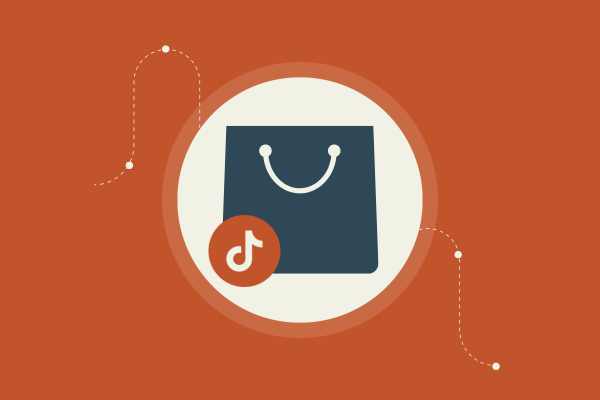How to Calculate Throughput for Your eCommerce Success
Calculating throughput is crucial for your growing eCommerce store. Throughput refers to the rate at which orders are processed and fulfilled. To find your throughput, divide the total number of orders by the time period it took to process them. This simple formula allows you to grasp how efficiently your store operates and identify areas for improvement.
Boosting your throughput can transform your business. Faster processing times mean happier customers and potentially skyrocketing sales. You'll want to delve into metrics and analytics that matter most, focusing on how they can guide your decision-making. Understanding these numbers will set your store apart and lead it to sustained growth.
Optimizing your operations with smart analytics is the key. By focusing on throughput, you not only improve customer satisfaction but also enhance the overall performance of your business.
Key Takeaways
Calculate throughput by dividing total orders by processing time.
Smart analytics drive better decisions and boost store performance.
Enhancing throughput improves customer satisfaction and sales.
Understanding Throughput in eCommerce
Throughput is a critical measure for your eCommerce store. It shows how many orders you handle in a set time. High throughput? Your store's humming along, handling lots of stuff. Low throughput? You might need to tweak things.
Defining Throughput
Throughput measures how efficiently your store processes orders. It's about how fast and smoothly things move from sales to shipment. Think of it as the heartbeat of your store. Orders and average order value (AOV) are key here. If your throughput is high, you're processing a ton of transactions. The more you can handle, the more successful you are.
To boost throughput, look at ecommerce metrics like sales conversion rates. These reveal how many visitors become customers. Better rates mean more orders, thus more throughput. Analyze each part of your sales funnel. Identify bottlenecks. Anything slowing down the process needs fixing fast.
Importance of Throughput for Your Store
Throughput directly impacts your bottom line. High throughput means more satisfied customers. They get their stuff faster. Happy customers are repeat customers. They spread the word. This ripple effect boosts your store's reputation.
You also optimize resources. Fast processing means less wasted time and fewer idle hands. Plus, it cuts downtime. Everything runs smoother. Take orders from the cart, through processing, straight to delivery. Ecommerce metrics, such as AOV, help measure success. Add more products, improve AOV, and see throughput soar.
Focusing on throughput isn't just about speed. It's about growth. More throughput means more success. Handle more, grow more. Simple as that.
Foundational Metrics to Track
In the wild world of eCommerce, tracking the right metrics is your secret weapon. These metrics help you make smarter decisions. They’re like a map guiding you through the jungle of digital sales. Let’s dive into the essential ones.
KPIs and Metrics Overview
KPIs (Key Performance Indicators) and metrics are the heartbeats of your eCommerce store. Without them, you can’t know if your strategies are working. Think of them as the Fitbit for your online business.
Start with tracking basics like sales, revenue, and customer counts. Dive deeper into specific eCommerce KPIs and metrics, such as cart abandonment rates and time on site. These numbers tell you the story of your store, helping you tweak and improve.
Remember, not all metrics are created equal. Choose KPIs that align with your business goals. Keep an eye on these indicators regularly to stay ahead of the game. They’re your compass in this vast eCommerce ocean.
Measure Your Visitors
Your visitors are gold. Knowing who comes to your site, how they got there, and what they do once they arrive is key. Track visitor metrics like traffic sources and bounce rates.
Use tools like Google Analytics to gather insights. Look at the number of visitors you’re getting and which traffic sources are most effective. Are they coming from social media, search engines, or referrals?
Understanding these metrics helps you optimize marketing efforts. Adjust your strategies based on where high-quality traffic is coming from. Make the journey seamless for visitors to become buyers.
Keeping an Eye on Conversion Rate
Conversion rate is the percentage of visitors who make a purchase. It’s a big deal. Why? Because it directly impacts your bottom line. If you have 1,000 visitors and 50 buy something, your conversion rate is 5%.
To improve it, analyze your site’s user experience. Check out your sales conversion rate and see where drop-offs occur. Maybe it’s a confusing checkout process or lack of payment options.
Fixing those barriers can boost conversions. Sometimes, small tweaks lead to big changes. Keep testing and refining, turning more visitors into happy customers.
Average Order Value and Why It Rocks
Average Order Value (AOV) measures the average amount spent each time a customer places an order. It’s a power metric, helping you gauge revenue potential. If your AOV is $50, and you want to make $10,000, you need 200 customers.
Boost AOV through upselling and cross-selling. Offer product bundles or suggest add-ons at checkout. Tracking AOV lets you spot opportunities to maximize revenue per transaction.
Watch for patterns. Are customers buying more of a particular item? Use that info to tailor promotions or stock higher quantities. Increasing AOV can significantly impact your bottom-line profits.
Customer Lifetime Value: The MVP
Customer Lifetime Value (CLV) is a game changer. It shows how much revenue you can expect from a single customer over their lifetime with your brand. High CLV means loyal customers and recurring purchases.
Calculate CLV by looking at past behaviors and purchase history. This metric helps you plan marketing budgets smartly and refine retention strategies. Keeping customers coming back is cheaper than acquiring new ones.
Focus on CLV strategies like loyalty programs, personalized offers, and excellent customer service. Make customers feel valued, nurture relationships, and your CLV will soar, bringing steady business growth.
Leveraging Analytics for Smarter Decisions
Understanding your eCommerce data is like finding a secret weapon. Use analytics to know your customers, track your sales, and improve your marketing. Let's break it down.
Diving Into Google Analytics
Google Analytics is your sidekick. It helps you track what's working and what isn't on your site. Bounce rates, average session duration, and pages per session are your friends here. They tell you how people are interacting with your site.
Check out the audience insights to know who visits your site. It’s like having a backstage pass to their likes and dislikes. Use this data to tweak your site and keep them coming back for more.
Traffic Sources and What They Tell You
Not all traffic is created equal. Find out where your visitors are coming from. Is it organic search, paid ads, or social media? This is where you dig into those traffic sources.
Knowing your traffic sources is like having a treasure map. It shows you where to put your marketing dollars for the best returns. If social media is your top source, focus more there. Don't waste money where it doesn’t pay off.
Conversion Metrics: Your Roadmap to Success
Conversion metrics are like your GPS. They guide you to success by showing how well your site turns visitors into customers. Track things like conversion rate, average order value, and cart abandonment rate.
These numbers are crucial. They help you understand what’s stopping people from buying. Your goal is to make that Checkout button irresistible. Use insights to refine your strategies and watch those sales grow. Dive into e-commerce metrics to fine-tune your approach and boost your store’s success.
Optimization Techniques to Skyrocket Throughput
To boost throughput in your eCommerce store, focus on reducing cart abandonment, increasing click-through rates, and improving social media engagement. These key areas can significantly increase your store's performance and lead to more sales.
Reducing Cart Abandonment Rate
Cart abandonment is a killer. Shoppers leave without buying, and you lose sales. You need to tackle this head-on.
One way to do this is by sending cart abandonment emails. Remind your customers about the items they left behind. Make these emails direct and engaging.
Another tip is to simplify your checkout process. Too many steps can drive people away. Keep it simple and quick. Offer guest checkout options. Let them buy without creating an account. That’s one less barrier.
Be clear about shipping costs. No one likes surprises here. Show all fees upfront. You can even offer free shipping for orders above a certain amount. It’s a hook that works.
Boosting Click-Through Rates
Your email and ad campaigns need a sharp click-through rate (CTR). Everyone’s battling for attention, so make it count.
Start with catchy subject lines. It's the first thing people see. They should be curious but not misleading.
Use clear and strong calls-to-action (CTAs). Your audience should know exactly what you want them to do—whether it’s to shop a sale or check out a new product. A/B test these for best results.
Visuals matter too. Bright images, engaging videos, and clear graphics can make a difference. They should catch the eye and lead users to click.
Enhancing Social Media Engagement
Social media engagement isn't just likes and shares—it's about interaction.
Start conversations. Ask questions in posts. Invite feedback. Respond to comments to build a community feel.
Share user-generated content. If someone posts about using your product, share it with your followers. It makes people feel valued and seen. Plus, it’s authentic marketing.
Collaborate with influencers. Their stamp of approval can be gold, expanding your reach quickly. Choose those who align with your brand values and have engaged followers.
Remember, each platform is different. Know where your audience hangs out and tailor your content for that space. Reddit isn’t TikTok, and Instagram isn’t Facebook. Stand out by knowing your playground.
Customer Retention Strategies
Boosting customer retention isn’t just about keeping customers. It’s about growth. From using the Net Promoter Score to improve loyalty to understanding repeat customer rates and influencing customer behavior, these strategies can take your store to the next level.
Harnessing the Net Promoter Score
Your Net Promoter Score (NPS) is like a crystal ball. It shows how likely your customers are to recommend you to others. A high NPS means customers love your brand. Low NPS? Time to shake things up.
How do you use NPS? Send out surveys. Ask customers how likely they are to recommend you on a scale from 0 to 10. Your promoters are those who give 9 or 10. Capture their praise. Address detractors’ concerns.
Track these scores and look for patterns. Spot the loyal fans and those needing more love. Make improvements based on feedback to boost your store’s loyalty factor.
The Repeat Customer Rate Game
If you want loyal customers, pay attention to your repeat customer rate. This metric tells you how many times a customer returns to your store to make another purchase.
Make shopping with you a no-brainer. Offer incentives, like discounts or loyalty points for repeat purchases. A solid rewards program can make customers feel they’re part of a special club.
Analyze buying patterns to understand their needs better. Personalized marketing goes a long way. Think of emails that reflect past purchases or preferences. It’s about creating an experience that makes customers want to come back.
Cultivating Customer Behavior
Understanding customer behavior is key. Why do they buy? When do they leave? Use insights to shift actions in your favor.
Collect data from all possible touchpoints. Look at website analytics, survey feedback, and purchase history. What trends pop up? Use this to tailor the shopping experience.
Create a journey that feels seamless. Reduce friction in the buying process. And communicate! Keep those lines open with emails or chat. The goal is to anticipate needs before they even voice them, leading you to a more engaged customer base.
Putting It All Together: Your eCommerce Dashboard
You want to see your store's performance at a glance, right? That's where your eCommerce dashboard comes in. It's time to gather the essential data and make it work for you.
Integrating Key Performance Data
Your dashboard should be the nerve center of your eCommerce operations. Start with conversion rates; they're your lifeline. Check how many visitors turn into buyers. Add bounce rate to see who’s leaving too soon.
Engagement metrics show you how much your audience loves your stuff. Think about adding metrics like reach and net promoter score. They tell you how far your brand goes and how likely customers are to recommend you. Keep an eye on churn rate, too – it tells you who's leaving and not coming back. You don’t want to be in the dark about why some customers drop off.
Dashboard Best Practices
Keep it simple. A crowded dashboard won’t help anyone.
Focus on metrics that move the needle. Cut back if you have too many fancy charts and graphs. Show only what matters.
Organize your dashboard by sections. Maybe one for sales, another for customer feedback, and more.
Use lists and tables to keep things tidy. Dashboards should be easy to read, not a mystery to solve.
Update it regularly. Your data’s no good if it’s stale.
Weekly updates? Great. Daily? Even better. Be consistent.
Also, consider what you might be missing. Is there a new metric you should track? Stay flexible. Being on top of trends keeps you ahead of the game. Read how Polymer can help you build and maintain an effective dashboard with minimal fuss.
Get ready to supercharge your eCommerce store with these game-changers!
Advanced Analytics and Reporting
Dive into advanced eCommerce analytics to truly understand your store's performance. You’ll learn how to improve reporting and make sense of valuable email marketing metrics.
Beyond Basics: Advanced Reporting
Advanced reporting is where the magic happens.
It's not just about counting sales. You want to know who your new users are and how long they stick around. Average session duration and store conversion rate are key. If visitors spend more time, they’re more likely to buy.
Visualize data with heat maps. See where people click.
Track website traffic and see what channels bring the most impressions. What marketing efforts bring visitors? Maybe it’s social media, maybe it’s your blog. Know this, and you can double down on what works.
Look at sales funnels. Where do people drop off? Is it at the checkout or before? Fixing this can increase conversions. Dive deeper with analytics tools to get all the juicy details.
Email Marketing Metrics that Matter
Email marketing isn’t dead. Far from it. You can measure the email open rate to see if your subject lines are pulling attention. If nobody opens your emails, you’re shouting into the void.
Track click-through rates. Are people clicking on your links? These metrics matter. Get them right and drive more traffic back to your store.
You should also segment your audience. Not all customers are the same. Some want big discounts, others might be new users looking for quality. Tailor your emails to these segments. Personalized emails get more love.
Lastly, watch conversion rates from emails. If people read and click, but don’t buy, something’s off. Fix it and unlock the true power of email marketing.







